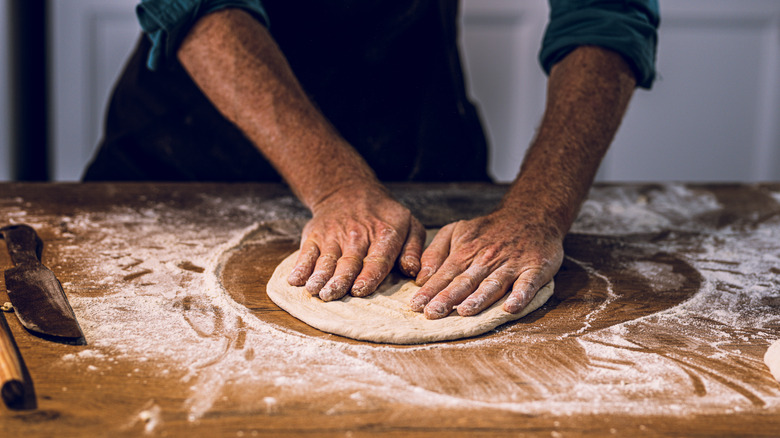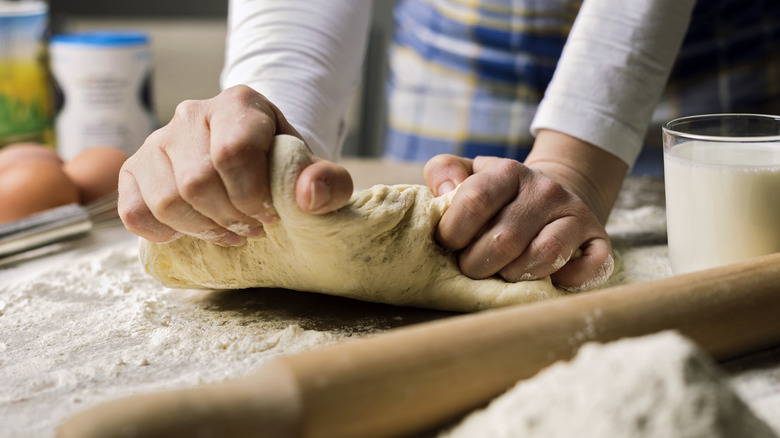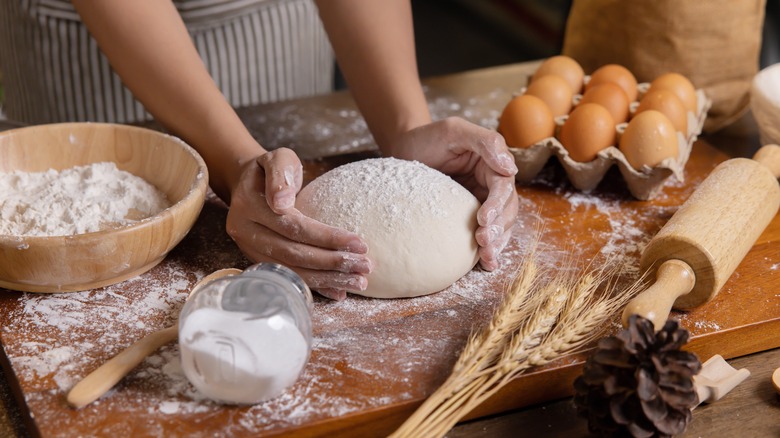The Simple Solution To Keep Your Pizza Dough From Shrinking
Homemade pizza is not just a delicious meal but also a fun, relaxing activity. Whether you're preparing homemade dough or working with the store-bought version, you might at times notice that no matter how hard you try to stretch that dough, it keeps shrinking back to its former size. It makes it hard to get a thin crust and results in a much smaller pizza. The problem has everything to do with how much time you've let it rest. If your dough isn't cooperating, you need to let it chill out for a bit before working with it again.
If you purchase store-bought pizza dough, it's likely refrigerated — and you'll see that most instructions ask you to let the dough rest at room temperature for at least 30 minutes before getting to work. This ties back into the same reason you rest it after kneading — the main culprit here is gluten. This protein is found in wheat products and it's a bit temperamental; that's where the resting technique comes in.
How to prevent your dough from shrinking
Pizza dough, while easy to make, does involve technique. It's made with flour, which contains plenty of gluten. As you knead the dough, that gluten develops, but those gluten strands are a little uptight at first. Kneading the dough well, and then letting it rest, helps to relax the gluten, which results in a stretchier and more pliable dough. Gluten strands also tighten up when this protein gets cold. The temperature of your dough matters; if you try to use pizza dough straight from the refrigerator, you'll run into the same shrinking problem.
Whether your dough is homemade or from a refrigerated package, the same rule applies if it keeps shrinking: Cover the dough completely with a towel, which will limit its air exposure and keep it from drying out. Leave it for about 15 minutes if the dough is already room temperature, or 30 minutes if it's cold, then try stretching it again. If it's still tight, repeat the resting process. Homemade dough might require being re-shaped once it's rested for a while.
Tips for stretching your pizza dough
While the temperature and kneading process are two things that will stretch those gluten strands, there are other ways you can make this process easier. Dough tends to be sticky, so if you're stretching it out on a counter or cutting board, add a little flour to the surface as well as to your hands. This will prevent the dough from sticking to anything, helping it stretch with ease.
In terms of the stretching process, you don't have to toss it in the air like people at famous pizzerias do. Flatten the dough a bit to turn it from a sphere into a disc, then pick it up with both hands on one side. Let the other side of the dough fall, inevitably stretching it out. Repeat this on all sides of the dough; let the dough hang for an even amount of time on all sides to help it maintain its circular shape. Then, finish the process by shaping it directly on whatever surface you plan to cook it on (a sheet pan or pizza pan). If you're baking the pizza on a stone or directly on the oven rack, shape it on a pizza peel. Whichever surface you choose, letting your dough rest will ensure you have a big enough pizza to satisfy your craving.


